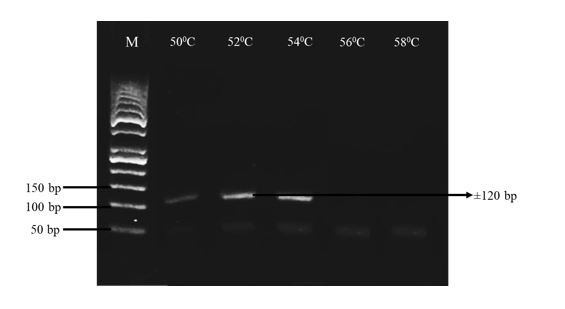
Tags
STUDY ON SENGON (Falcataria moluccana) RESISTANCE TO BOKTOR PEST (Xystrocera festiva) AND GALL RUST (Uromycladium tepperianum) PART III: OPTIMATION OF CLONING PROTOCOLS AND GENE EXPRESSION STUDY
Content Language : English

Monoculture sengon plantation often suffers from pest and disease attack, however effective control measure of pest and diseases is not available yet, that tree improvement program by selecting resistant lines has much to offer. This study aimed at (a) Optimization of construction of genomic library library of sengon as materials to obtain full length sequence of resistance genes against pests and diseases, (b) Optimization of construction of cDNA library for identification of expressed resistance genes by PCR and sequencing, (c) Study the expression of some sequenced gene(s) by RT-PCR, (d). Development of new marker, e.g. SNiP, from sequence analysis. Various methods were tried in experiments started from isolating both genomic DNA and total RNA, synthesis of double strand cDNA, optimizing PCR process to obtain genes sequences encoding resistance to pests and diseases using various specific primers and annealing temperature, also gene expression analysis using RT-PCR. Similar experiments were done on agarwood plants (Aquilaria
malaccensis dan Gyrinops verstegii) as control. Primer AcTI, TaACT, and AcACT using sengon DNA template produced fragment sequences of genes encoding TI and actin with sizes 228 bp, 92 bp, and 146 bp, respectively. Fragment sequences from primer AcTI had high similarity with TI gene sequences from Acacia confuse. Fragment sequences from primer TaACT and AcACT similar to actin genes from Fabaceae family, such as Glycine max, Vigna radiata Lupinus angustifolius and Poaceae family, i.e. Oryza sativa. Fragment sequences from primer TAAct with size 98bp had similarity with actin gene of Sarocalamus faberi. Sequence of putative α- amylase inhibitor gene was obtained from primer GMAAI at size 144bp and similar to LTP gene from Rosa chinensis, which had domain structure and function similar to α-amylase inhibitor. PCR using DNA template of A. malaccensis amplified fragment at 54.8oC for HMGR gene and at 57oC for actin gene. Using DNA template of G.versteegii amplified fragment at 54.8oC for HMGR gene and 55.8oC for actin gene. Using cDNA template of A. malaccesnis and G. versteegii amplification happened at 56oC for HMGR and actin genes. Genes encoding HMGR from both agarwood plants were similar to A. sinensis gene, while their actin genes were similar to A. microcarpa gene in the Genebank.
Attachments

This work is licensed under a Creative Commons Attribution-NonCommercial-ShareAlike 4.0 International License.
